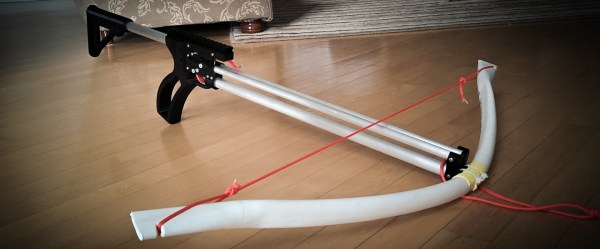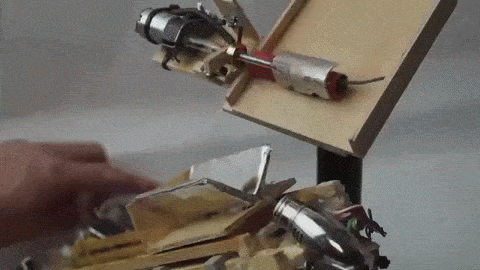[JoergSprave] has done it again. His latest, most ridiculous weapon? A Gatling gun that fires crossbow bolts, using compressed air inside coke bottles — and an electric screwdriver.
For those of you not aware, [Joerg] is our favorite eccentric German maker, a purveyor of slingshots and all things ridiculous and weaponised. He runs the SlingShot Channel on YouTube, and has graced us with things like a slingshot cannon (firing 220lb balls!), a machete slingshot for the upcoming zombie apocalypse, and more.
Each coke bottle has a quick release pneumatic air valve, with a wooden lever attached to it to make opening the valve easier and quicker. The coke bottles are pressurized separately using an air compressor, but can also be filled using a bicycle pump — he got his hands on a pump capable of putting out 300 PSI! Word of safety though — you really don’t want to use coke bottles as pressure vessels — but [Joerge] is crazy so we’ll let it slide. Continue reading “Gatling Gun Shoots Arrows Out Of Coke Bottles”







 Until then, we’ll have to settle with
Until then, we’ll have to settle with 










